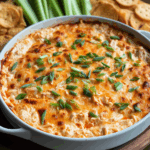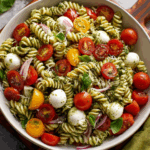Café de olla, or “pot coffee,” is a beloved traditional Mexican beverage that brings together the warmth of community and the comfort of home. This unique preparation method creates a distinctive flavor profile, unlike typical brewed coffee. It is particularly enjoyed in rural areas and among families who cherish their cultural heritage. With its aromatic spices and sweet undertones, café de olla is more than just a drink; it’s a symbol of Mexican hospitality and familial bonds.
Full Recipe:
Ingredients
- 4 cups water
- 1/2 cup coarsely ground coffee (Mexican coffee if available)
- 1 stick of cinnamon (or 1/2 teaspoon ground cinnamon)
- 2-3 cloves (optional)
- 1-2 pieces of piloncillo (about 4 ounces, or brown sugar as a substitute)
- Optional: orange peel or anise for extra flavor
Instructions
- Boil the Water: In a pot, bring the water to a boil.
- Add Spices: Once boiling, add the cinnamon stick, cloves, and any additional spices you like. Let it simmer for about 5-10 minutes to infuse the flavors.
- Add Coffee: Stir in the coarsely ground coffee and return to a boil. Reduce heat and let it simmer for about 5 minutes.
- Sweeten: Add the piloncillo (or brown sugar) and stir until dissolved. Adjust sweetness to taste.
- Strain and Serve: Remove from heat and strain the coffee into mugs to remove the grounds and spices.
- Enjoy: Serve hot and enjoy your café de olla! You can also add milk or cream if you like it creamier.
Historical Roots
The origins of café de olla date back to the colonial period in Mexico, influenced by the indigenous peoples’ use of local ingredients combined with Spanish customs. Traditionally, this coffee was brewed in clay pots (ollas), which imparted a unique earthy flavor to the coffee. The use of piloncillo—a form of unrefined cane sugar—highlights the Mexican agricultural practices and the sweetness derived from native crops.
In its earliest form, café de olla was likely a practical solution for utilizing local resources. The spices, such as cinnamon and cloves, not only enhanced the flavor but also served as natural preservatives. Over time, this method of preparation evolved into a cherished ritual, often associated with gatherings, celebrations, and family traditions.
Cultural Significance
Café de olla is more than just a beverage; it represents a connection to Mexican culture and traditions. It is often served during festive occasions, family gatherings, or simply enjoyed during the daily morning routine. The process of brewing café de olla can be a communal activity, bringing family members together to share stories and laughter over a pot of coffee.
In many households, the preparation of café de olla is passed down through generations, with each family adding their unique twist to the recipe. Some might incorporate additional spices like star anise or even orange peel, creating variations that reflect regional preferences and personal tastes.
Brewing Techniques and Variations
While the traditional method involves using a clay pot, modern adaptations have allowed for different brewing methods. Many people now use standard pots or coffee makers while still incorporating the signature spices and piloncillo. The essence of café de olla lies in the combination of coffee with spices and sweeteners, allowing for flexibility in preparation.
In addition to the standard recipe, some variations include:
- Spiced Café de Olla: Adding ingredients like cardamom or nutmeg for extra depth.
- Café de Olla with Milk: For those who prefer creamier coffee, adding warm milk or evaporated milk can create a delightful twist.
- Iced Versions: In warmer climates, iced café de olla has become popular, allowing for a refreshing take on the classic beverage.
The Flavor Profile
The flavor of café de olla is distinctive and multi-layered. The combination of coarsely ground coffee, warm spices, and sweet piloncillo creates a harmonious blend that tantalizes the palate. The coffee itself often carries chocolatey and nutty notes, which are beautifully complemented by the warmth of cinnamon and the sweetness of the sugar.
The spices not only enhance the flavor but also provide potential health benefits. Cinnamon, for instance, is known for its anti-inflammatory properties, while cloves have antioxidant effects. The use of piloncillo instead of refined sugar also adds a richer, more complex sweetness, which aligns with healthier lifestyle choices.
Modern Popularity and Global Influence
Café de olla has gained popularity beyond Mexico’s borders, thanks to the growing appreciation for traditional and artisanal foods. Cafés and restaurants in various parts of the world now offer their interpretations of this classic drink, often featuring local ingredients and innovative twists.
Social media has also played a significant role in popularizing café de olla. Enthusiasts share their brewing methods, variations, and experiences, fostering a community that celebrates this cultural beverage. This global interest not only honors Mexican traditions but also allows for cross-cultural exchanges that enrich culinary practices worldwide.
Making the Perfect Café de Olla
For those looking to recreate the authentic experience of café de olla, attention to detail is key. Here are some tips to consider:
- Choose Quality Coffee: Opt for coarsely ground coffee, preferably sourced from Mexican coffee farms to retain authenticity.
- Experiment with Spices: Don’t be afraid to try different spices based on personal preference. The beauty of café de olla lies in its adaptability.
- Mind the Water: The quality of water can significantly affect the taste of your coffee. Using filtered water can enhance the overall flavor.
- Consider Brewing Time: Allowing the coffee to brew for the right amount of time ensures a rich extraction of flavors without becoming bitter.
- Presentation Matters: Serving café de olla in traditional clay cups can enhance the experience, adding an element of authenticity and warmth.
Conclusion
Café de olla is a delightful reflection of Mexican culture, history, and community. Its rich flavors and aromatic qualities invite us to pause, reflect, and savor the moment. Whether enjoyed during a quiet morning or shared among friends and family, this beverage transcends mere consumption, becoming a ritual of connection and celebration.
As you explore the world of café de olla, remember that each cup tells a story—a story of tradition, innovation, and love. Embrace the opportunity to share this enchanting beverage with others, fostering connections and celebrating the rich tapestry of culture that makes café de olla a true treasure.






